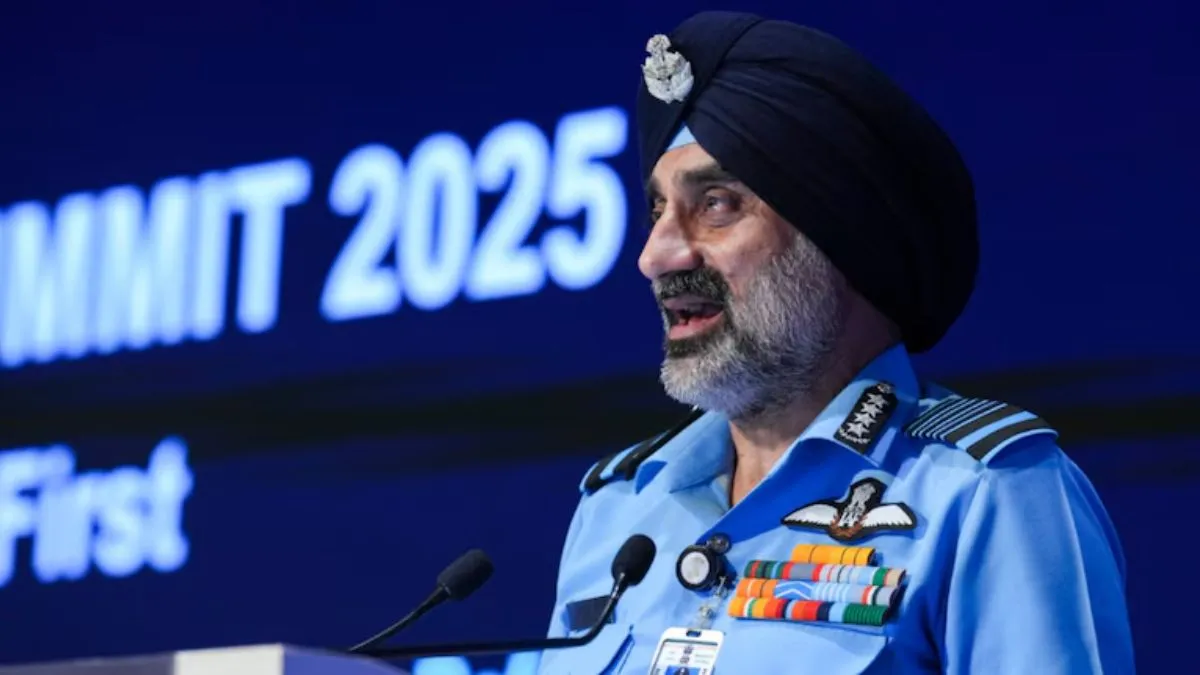Indian Air Force Chief AP Singh on Saturday said that India shot down five fighter jets of Pakistan and another large aircraft during the Operation Sindoor against Pakistan-based terror camps. Air Chief Marshal AP Singh further dismissed any political constraint on the armed forces during the entire operation and said that they had full freedom to “plan and execute.”
Addressing an event at the Hal Management Academy on Operation Sindoor, Air Chief Marshal AP Singh said, “We have at least five fighters confirmed kills and one large aircraft, which could be either an ELINT aircraft or an AEW &C aircraft, which was taken on at a distance of about 300 kilometres. This is actually the largest ever recorded surface-to-air kill that we can talk about.”
#WATCH | Bengaluru, Karnataka | Speaking on Operation Sindoor, Chief of the Air Staff, Air Chief Marshal AP Singh says, “…We have at least five fighters confirmed kills and one large aircraft, which could be either an ELINT aircraft or an AEW &C aircraft, which was taken on at… pic.twitter.com/ieL6Gka0rG
— ANI (@ANI) August 9, 2025
Detailing further, the IAF Chief said that India’s surface-to-air defence systems targetted major airfields in Pakistan, including Shahbaz Jacobabad airfield, where, he said, was an F-16 hangar which was also destroyed in “India’s caliberated attacks”.
ALSO READ: Pakistan Responds With Call For Peace After India’s Parliament Debate On Op Sindoor: ‘Resolution Of All Issues…’
“Shahbaz Jacobabad airfield, one of the major airfields that was attacked. Here there’s an F-16 hangar. One half of the hangar is gone. And I’m sure there were some aircraft inside which have got damaged there. We were able to get at least two command and control centres, like Murid and Chaklala. At least six radars, some of them big, some of them small. We have an indication of at least one AEW&C in that AEW&C hangar and a few F-16s, which were under maintenance there,” IAF Chief said.
The Air Chief Marshal also refute the claims that political constraint was put on the armed foced during the military confrotation and asserted that a key reason for the success of Operation Sindoor was the “presence of political will.” He also lauded the role of Chief of Defence Staff (CDS) in bringing all the three armed forces together.
#WATCH | Bengaluru, Karnataka | Speaking on Operation Sindoor, Chief of the Air Staff, Air Chief Marshal AP Singh says, “A key reason for success was the presence of political will. There were very clear directions given to us. No restrictions were put on us… If there were any… pic.twitter.com/nnveLS1fJr
— ANI (@ANI) August 9, 2025
“A key reason for success was the presence of political will. There were very clear directions given to us. No restrictions were put on us. If there were any constraints, they were self-made. We decided how much to escalate. We had full freedom to plan and execute. Our attacks were calibrated because we wanted to be mature about it. There was a synchronisation between the three forces. The post of CDS made a real difference. He was there to get us together. NSA also played a big role in getting all the agencies,” he said.
Revealing the information about India’s damage to Pakistan’s defence capabilities, IAF Chief said that Indian Armed Forces successfully targeted at least two command and control centres along with six radars of varying sizes. Apart from these three hangars, the Sukkur UAV hangar, the Bholari hangar, and the Jacobabad F-16 hangar werte also destroyed.
“We were able to get at least two command and control centres, like Murid and Chaklala. At least six radars, some of them big, some of them small. Two SAGW systems that is in Lahore and Okara. We attacked three hangars. One was the Sukkur UAV hangar, the Bholari hangar and the Jacobabad F-16 hangar. We have an indication of at least one AEW&C in that AEW&C hangar and a few F-16s, which were under maintenance there,” he said.
#WATCH | Bengaluru, Karnataka | Speaking on Operation Sindoor, Chief of the Air Staff, Air Chief Marshal AP Singh says, “None of their aircraft could come anywhere near the boundaries of Akash and even MRSAM. All their aircraft were taken on by LRSAM because they were trying to… pic.twitter.com/WBAXFlpsvN
— ANI (@ANI) August 9, 2025
India launched Operation Sindoor on May 7 as a decisive military response to the April 22 Pahalgam terror attack in which 26 people were killed. Indian Armed Forces targeted terror infrastructure in Pakistan and Pakistan-occupied Jammu and Kashmir, leading to the death of over 100 terrorists affiliated with terror outfits like the Jaish-e-Mohammed, Lashkar-e-Taiba and Hizbul Mujahideen.
ALSO READ: PM Modi Takes Jibe At Oppn Strategy On Operation Sindoor In NDA Meet, Calls It Self-Goal: ‘Aisa Vipaksh Kahan Milega’
After the attack, Pakistan retaliated with cross-border shelling across the Line of Control and Jammu and Kashmir as well as attempted drone attacks along the border regions, following which India launched a coordinated attack and damaged radar infrastructure, communication centres and airfields across 11 airbases, including Nur Khan air base in Pakistan.
